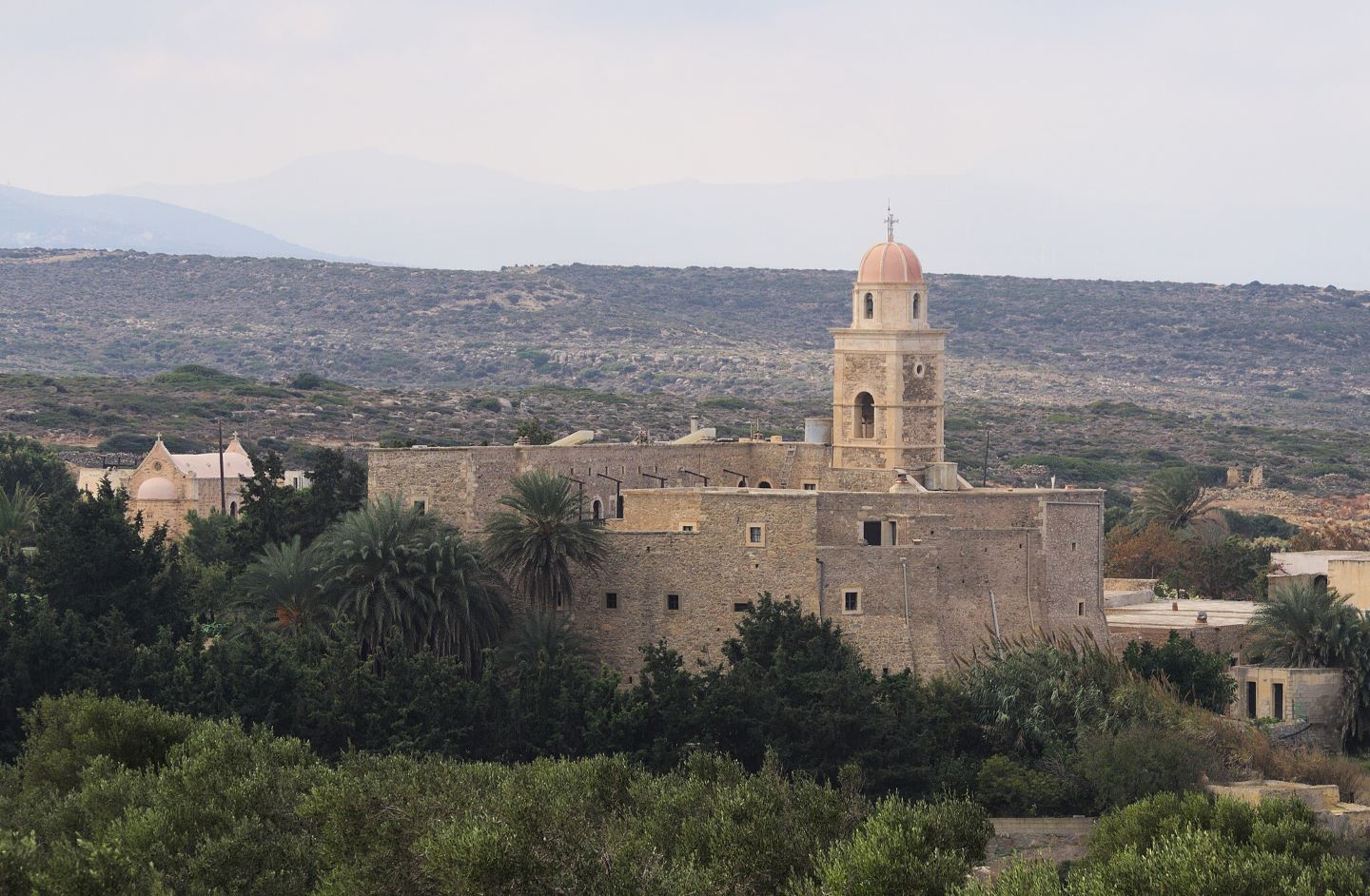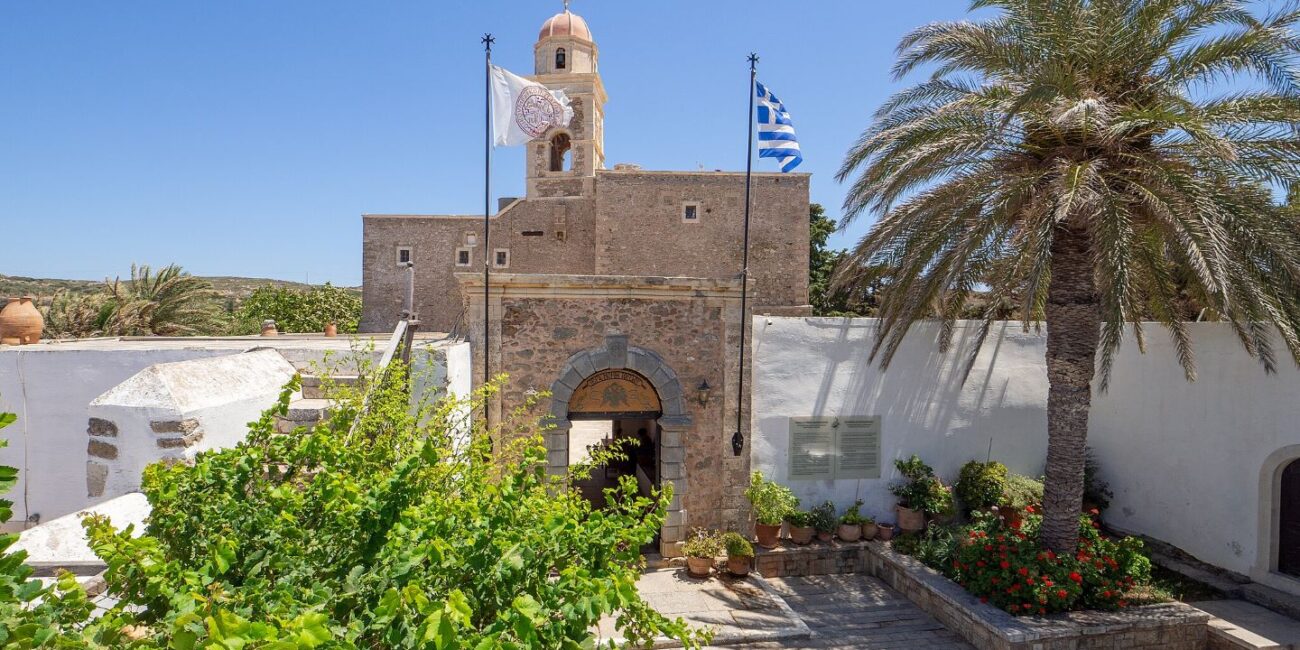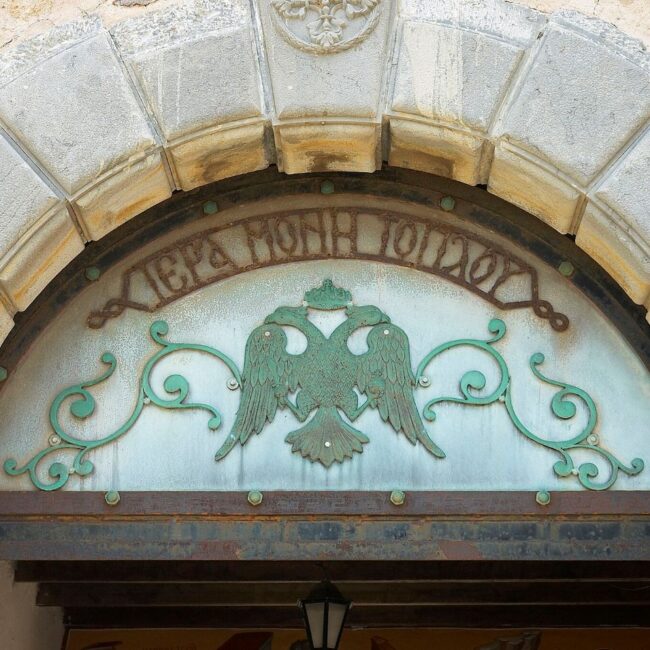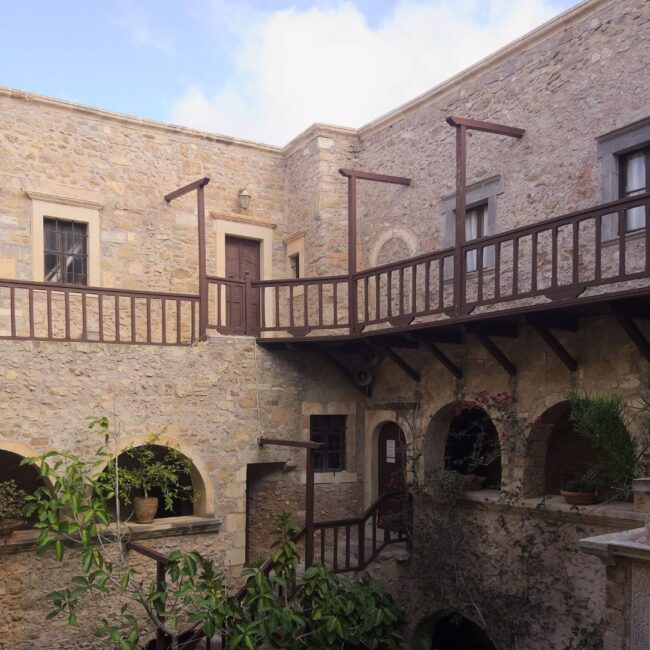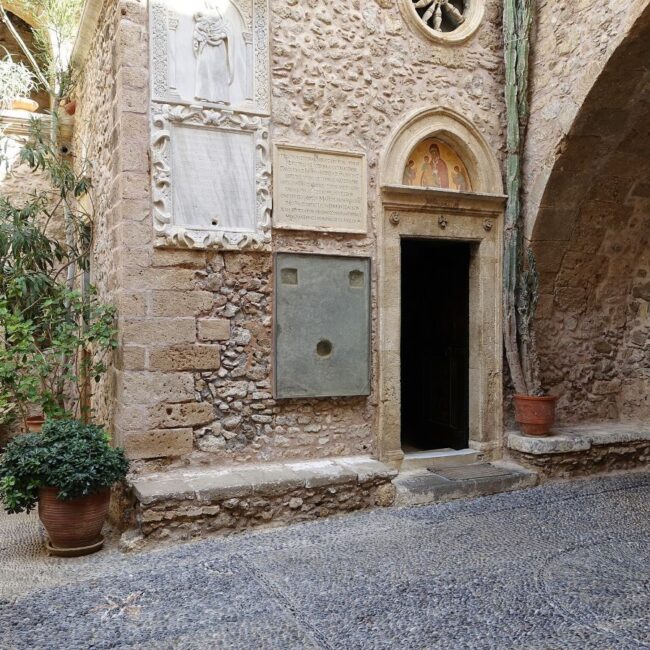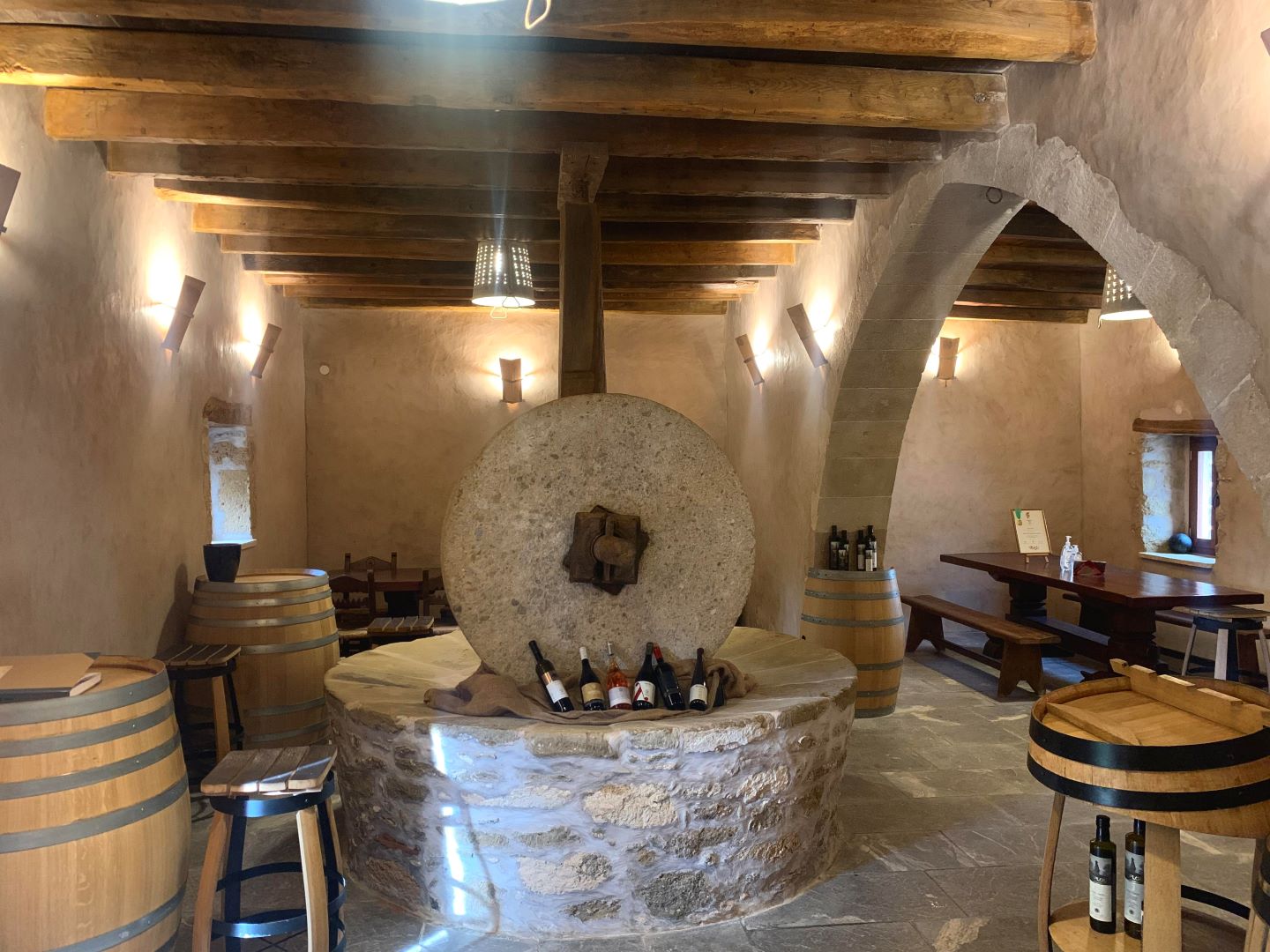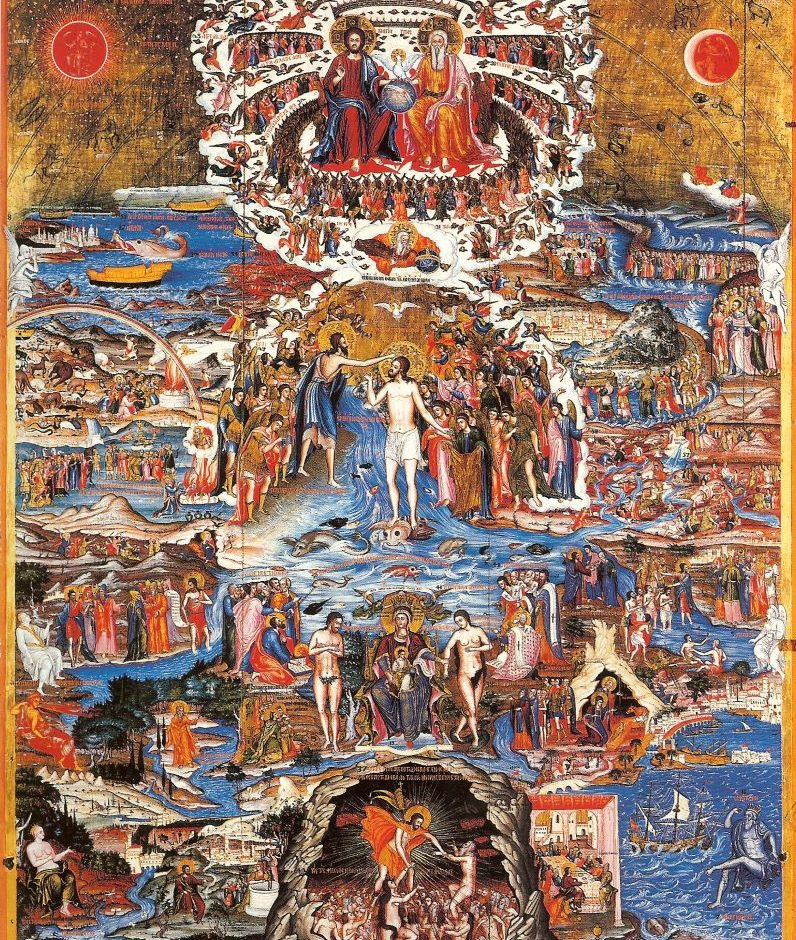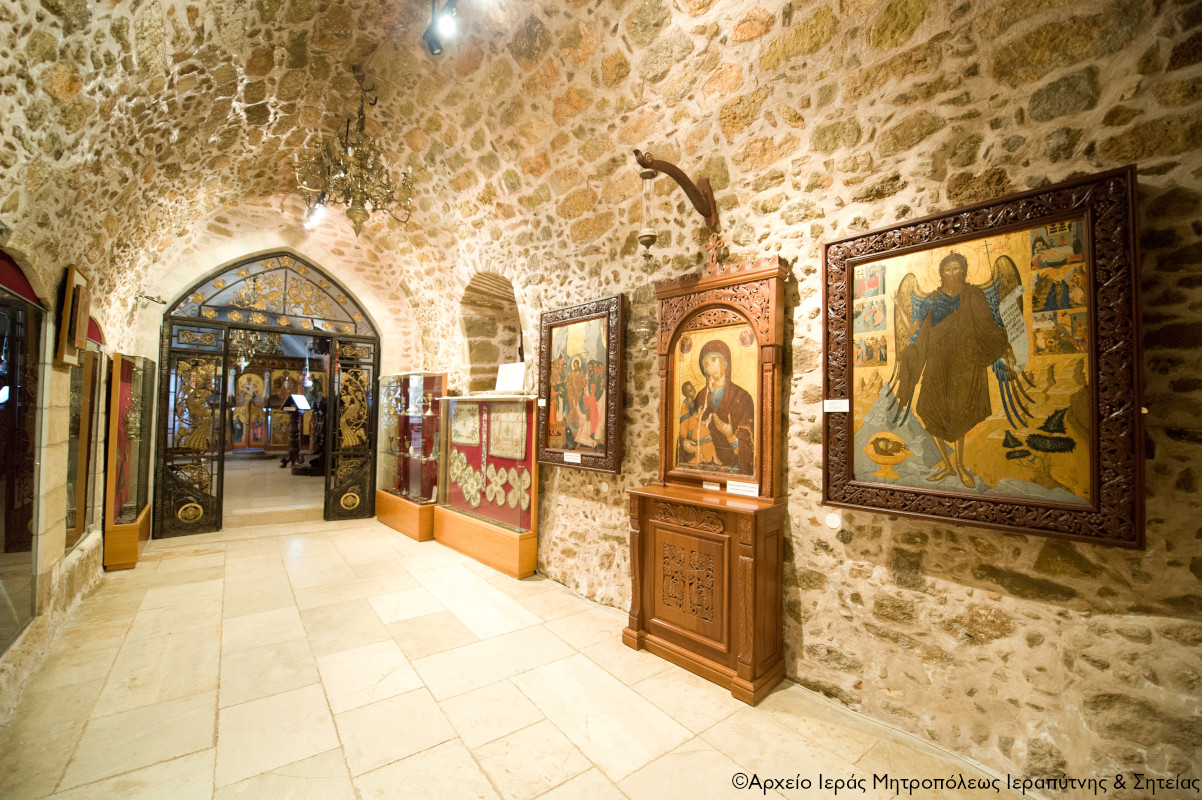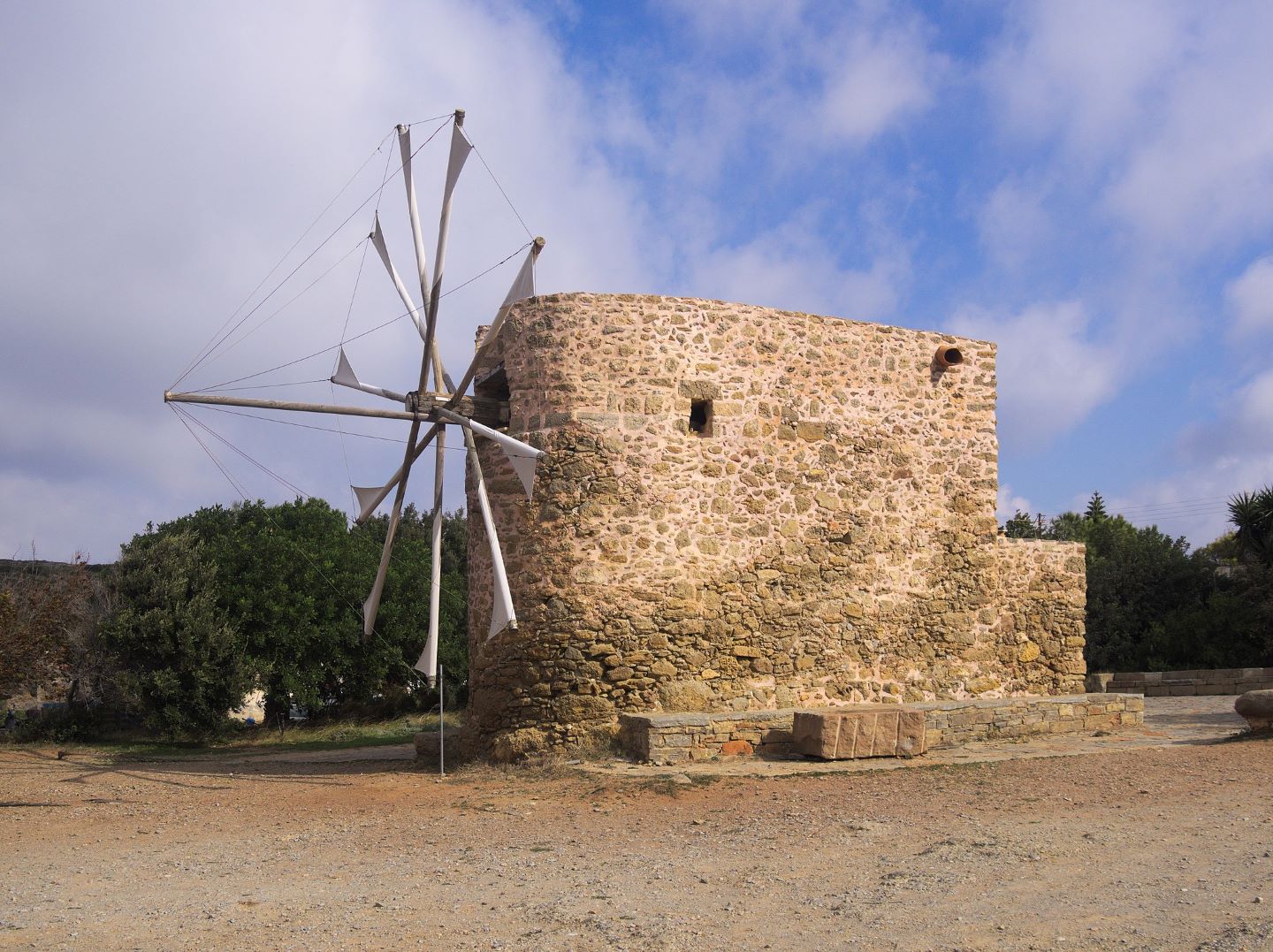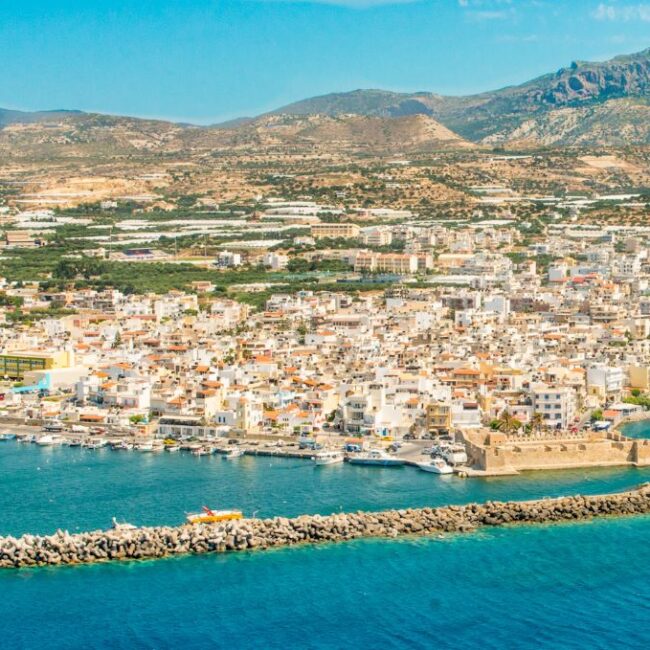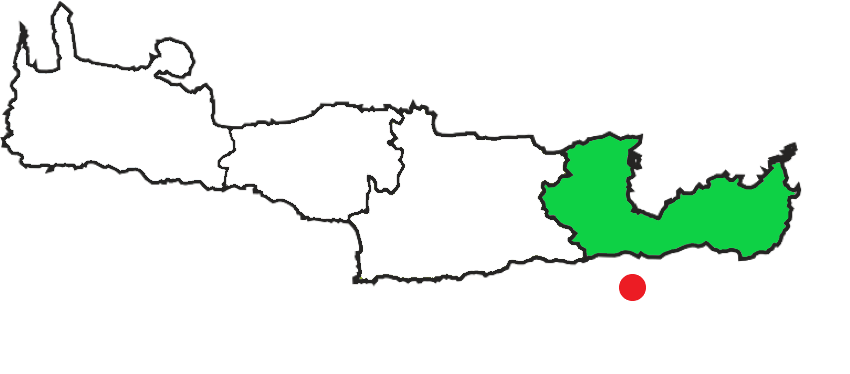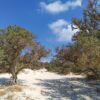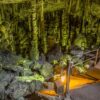Toplou Monastery
Beyond the Cannon: A Journey to Toplou Monastery
Toplou Monastery, nestled among the rocky mountains of eastern Crete, is a remarkable tribute to faith and resilience. It is located in the Lassithi District, about 85 kilometers from the city of Agios Nikolaos, 10 kilometers from Sitia, and 6 kilometers from Palaiokastro. This thriving monastery has a rich history, stunning scenery, and cultural riches waiting to be discovered. Let’s delve into a journey together.
Origin of Name & History
The exact date of Toplou Monastery’s founding remains shrouded in a bit of mystery, but estimates place it around the 14th century.
Originally christened Panagia Akrotiriani, translating to “Our Lady of the Cape,” the name reflects its proximity to the coast.
However, the Ottomans’ arrival in Crete during the latter years of the same century marked a shift.
The Turks, impressed by a cannon mounted above the monastery’s entrance, bestowed upon it the name “Toplou,” which translates to “place of the cannon” in Turkish.
This alternative name stuck, though Panagia Akrotiriani apparently retains some legal significance.
During the Venetian rule, Toplou Monastery weathered the storms of time, facing a devastating earthquake in 1612 that necessitated significant reconstruction.
Despite this setback, the monastery continued to thrive as a spiritual and cultural center.
The monastery was often a target of pirates, which led to the rise of its walls, which are 10 meters high.
A heavy gate door was placed on its west side, named “Lontza Gate,” and it was rolled on wheels in order to close faster due to its weight.
Right above it, there is a hole called the “killer.” Its purpose was to throw hot oil mixed with lead at its intruders.
As we mentioned above, a cannon was placed in order to warn incoming intruders but also to signal the nearby settlements of an imminent threat.
Its walls sheltered not only monks but also served as a refuge for the local population during times of unrest. Toplou Monastery played a crucial role in the Cretan struggle for independence from Ottoman rule, offering sanctuary and support to rebels.
Many times, monks were executed for sheltering Cretan fighters during the occupation. In 1828, during the march of the Greek rebels, around 1250 Turks (250 armed forces and 1000 citizens) took refuge in the monastery. After a short siege with 12 losses, they surrendered and were deported from the island.
Toplous Monastery’s last stand was during the German occupation. A radio was housed in the monastery, providing news of the war in North Africa and communication between the Allied forces. When the Germans discovered this, they arrested the allied troops that were sheltered in the premices and executed the abbot along with two other monks. The rest were taken to the Agia Prisons, located in Agia village near Chania, and met their end there.
the monastery's premices
While the scale may appear modest compared to other grand monasteries, its architectural significance lies in its fortified nature, reflecting the turbulent times during which it was built.
Having to defend itself from pirates and invaders, Toplou monastery is heavily fortified, being laid out around a courtyard paved with sea pebbles and surrounded by strong, 10-meter-high square walls.
In its present form, it extends to about 800 square meters on three floors, divided into over 40 rooms (cells, guest houses, kitchens, and warehouses). According to tradition, there are 100 doors on its premises, but only 99 were ever discovered.
The 33-meter-high belltower dates back to 1558. After Ottoman rule, it served as a school.
At the entrance of the main temple, there is an inscription of the “Arbitration of Magnets” from 132 BC, which speaks to the friction between ancient Itanos and Ierapytna and was discovered in the ruins of (near) ancient Itanos.
The conflict concerns the island of Lefki (now Koufonissi), which was a significant production center for the red dye known as purple, and the island was eventually owned by Itanos.
The main church (katholikon) is built as a two-nave basilica dedicated to the Virgin Mary and Saint John the Theologian.
The monastery celebrates on September 26 in honor of Saint John the Theologian, when a big festival takes place with pilgrims arriving from all over Greece.
Toplou is open to the public daily, from 9:00 to 17:00, but make sure you contact first in order to have a complete experience.
While the surrounding terrain may appear arid at first glance, it unfolds into a tapestry of olive groves and vineyards, infusing the air with a delightful aroma.
The monastery produces many types of wine (rosé, white, and red wine), tsikoudia, and is awarded for its extra virgin oil.
All of its products are organic and labeled, and during your visit, for a small fee, you can taste them in their new wine tasting room called “Fabrika,” located in the courtyard.
You can learn more about Toplou Monastery products and the tasting fees here!
arts & museum
The Toplou monastery was raided many times in the past, but much of the treasure still remains on its premises. Icons, artifacts, bones of saints, and many more are on display for you to see.
Inside the main church of the monastery, there are wonderful icons that give an imposing atmosphere to the reverent atmosphere, such as the icon entitled “Great are you Lord and wonderful are your works” («Μέγας εί Κύριε και Θαυμαστά τα έργα Σου») which has 61 representations from the wish of the same name of the Great Sanctification of the Epiphanies and which was compiled by the Patriarch Sophronio of Jerusalem.
The icon “Axion Esti” (meaning: it is worth) created by Ioannis Cornaros in 1770 and the icon “Rodon Amaranto” (meaning: rose that can’t be withered) from 1771, Saint Anastasia the Apothecary (farmakolutria), as well as the icon of the Virgin Mary, which was found in a nearby cave where still water flows, Agiasma (meaning: Holy water).
A museum within the monastery walls houses a collection of artifacts that illuminate the rich history of the region.
From ecclesiastical treasures to everyday objects used by the monks, these exhibits offer a glimpse into the monastery’s past. Ιn addition to the wonderful icons, objects of ecclesiastical art such as Gospels, silver-gilded crosses, Patriarchal Seals, Sultanic Firmans (orders fron the Sultan), seals, revolutionary banners, hierarchal vestments and others are exhibited.
The relics of Saints Charalambous, Domitianus, Tryphonos, Panteleimonos, Stefanos, Averkios, Iakovos and Saint Anastasia are preserved in the monastery.
arriving at the monastery
Arriving at the monastery, there is spacious parking for you to leave your car. Sometimes music festivals take place there.
As we mentioned above, Toplou Monastery is surrounded by a vast stretch of olive groves and vineyards, but there is another place that you can visit after your visit to the monastery.
On its premises, there is a restaurant/café, a well maintained flour mill, and a beautiful sculpture. There, you can enjoy a meal or a beverage in the gardens and revisit what you just saw in your mind.
Enjoy your surroundings, and let your mind and spirit escape into the serenity of the area.
How to get there
There are a few ways to get to Toplou Monastery, depending on your budget and preferred mode of transportation. Here are the options:
By Car: Renting a car offers the most flexibility and allows you to explore the winding roads of eastern Crete at your own pace. The drive from Heraklion, the largest city in Crete, takes approximately 2 hours and 16 minutes, while from Agios Nikolaos is an 1 hour and 30 minutes drive.
By Bus: Unfortunately, there is no direct bus from Agios Nikolaos to Toplou monastery. Although you can catch a connecting bus route from Agios to Palekastro. Catching a bus from nearby towns like Palekastro offers a more budget-friendly option. Public buses in Crete are reliable and comfortable, and the journey from Palekastro takes approximately 30 minutes. Be sure to check bus schedules in advance, especially during the off-season, as frequencies may be reduced.
By Taxi: Taxis are readily available in most towns and cities in Crete. We cannot be sure about the cost of their services.
Conclusion
While the surrounding landscape may not boast a beach, the beauty of the Cretan mountains and the endless expanse of the Aegean Sea provide a breathtaking backdrop. Those seeking a connection with nature can wander through the olive groves and vineyards that hug the monastery, soaking in the tranquility of the setting.
ADDITIONAL TIPS FOR AN ENJOYABLE VISIT TO toplou monastery
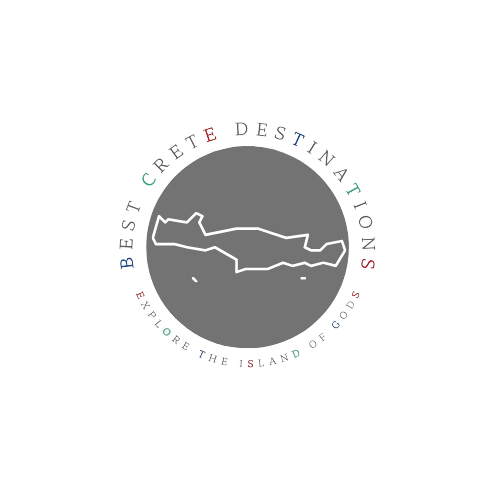
Destinations near toplou monastery
More options for nearby locations to plan your vacations better!


